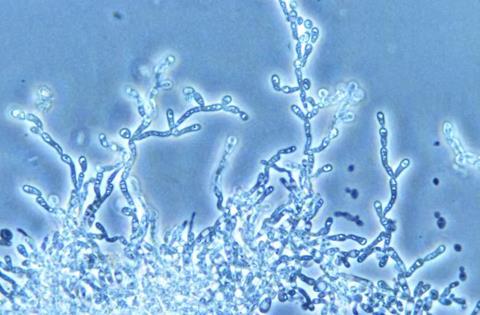Researchers in the Manchester Institute of Biotechnology (MIB) at The University of Manchester have developed a new biocontainment method for limiting the escape of genetically engineered organisms used in industrial processes.

In a paper published in Nature Communications, Dr Stefan Hoffmann, lead author on the paper, and Professor Patrick Cai have found that by adding an estradiol-controlled destabilising domain degron (ERdd) to the genetic makeup of baker’s yeast (Saccharomyces cerevisiae), they can control survival of the organism.
Destabilising domain (DD) degrons are an element of a protein that allow for degradation, unless a particular ligand – a small molecule that binds with the DD degron – is present to stabilise it. The researchers engineered the yeast to degrade proteins essential for life unless estradiol, a type of oestrogen, was present. Without estradiol, the yeast would die.
Genetic containment
This new genetic containment technique differs from previous techniques in that it directly targets essential proteins. It has no detrimental effects on organism function, even when compared with the wild-type organism and it remains an active part of the genome, even after 100 generations.
To achieve this, the researchers tagged 775 essential genes with the ERdd tag and screened the resulting organisms for estradiol-dependent growth. Through this screening, they identified three genes, SPC110, DIS3, and RRP46 as suitable targets. The modified yeast grew well in the presence of estradiol and failed to thrive in its absence.
Dr Stefan Hofmann, lead author and postdoctoral researcher said: “As industry begins to use engineering biology more and more, we need to make sure that we have all the right preventative measures in place at the start. While our new genetic biocontainment method effectively prevents escape of engineered organisms, we see it as one of several layers necessary to make engineering biology applications safe.”
Safety mechanisms
Professor Patrick Cai, Chair in Synthetic Genomics, said: “Safety mechanisms are instrumental for the deployment of emerging technologies such as engineering biology. The development of biocontainment systems will effectively minimize the risk associated with the emerging technologies, and to protect both the researchers and the wider community. It also provides a novel solution to combat intellectual espionage to safeguard our ever-growing bio-economy. This work is a great example of the responsible innovation of MIB research.”
Engineering biology is a relatively new, but expanding field of science that allows industry to use microorganisms, such as yeasts and bacteria, to produce value-added chemicals cheaply and efficiently. However, as microorganisms are often genetically engineered to increase efficacy, it becomes a problem if the organisms escape into the natural environment.
To ensure modified organisms do not find their way out of an laboratory setting, the NIH sets strict escape rate thresholds. Currently, most genetic safeguards rely on one of two methodologies to keep within the guidelines: either by engineering in an auxotrophy, whereby the organism relies on a specific metabolite to be present in its environment to survive, or a “suicide” gene, where the organism itself produces a toxin that kills it if certain conditions are not met.
Caveats to methods
While these methods are generally genetically stable and effective enough to meet the NIH guidelines, they do have caveats to their efficacy. In the case of relying on a metabolite to sustain the organism, this metabolite may also be found in the wild and could not ensure the organism does not survive if it escapes. For “suicide” genes, as this is a direct threat to the organism, over generations the gene can selectively mutate and become inactive rendering it an ineffective control.
The new biocontainment method described by Hoffmann and Cai could be used in conjunction with the existing methods to bolster their effectiveness and deliver an even more robust escape frequency. Even if used as the sole biocontainment method, it provides an escape frequency of <2´10-10 which far exceeds the NIH guideline of an escape rate of less than 10-8.







No comments yet